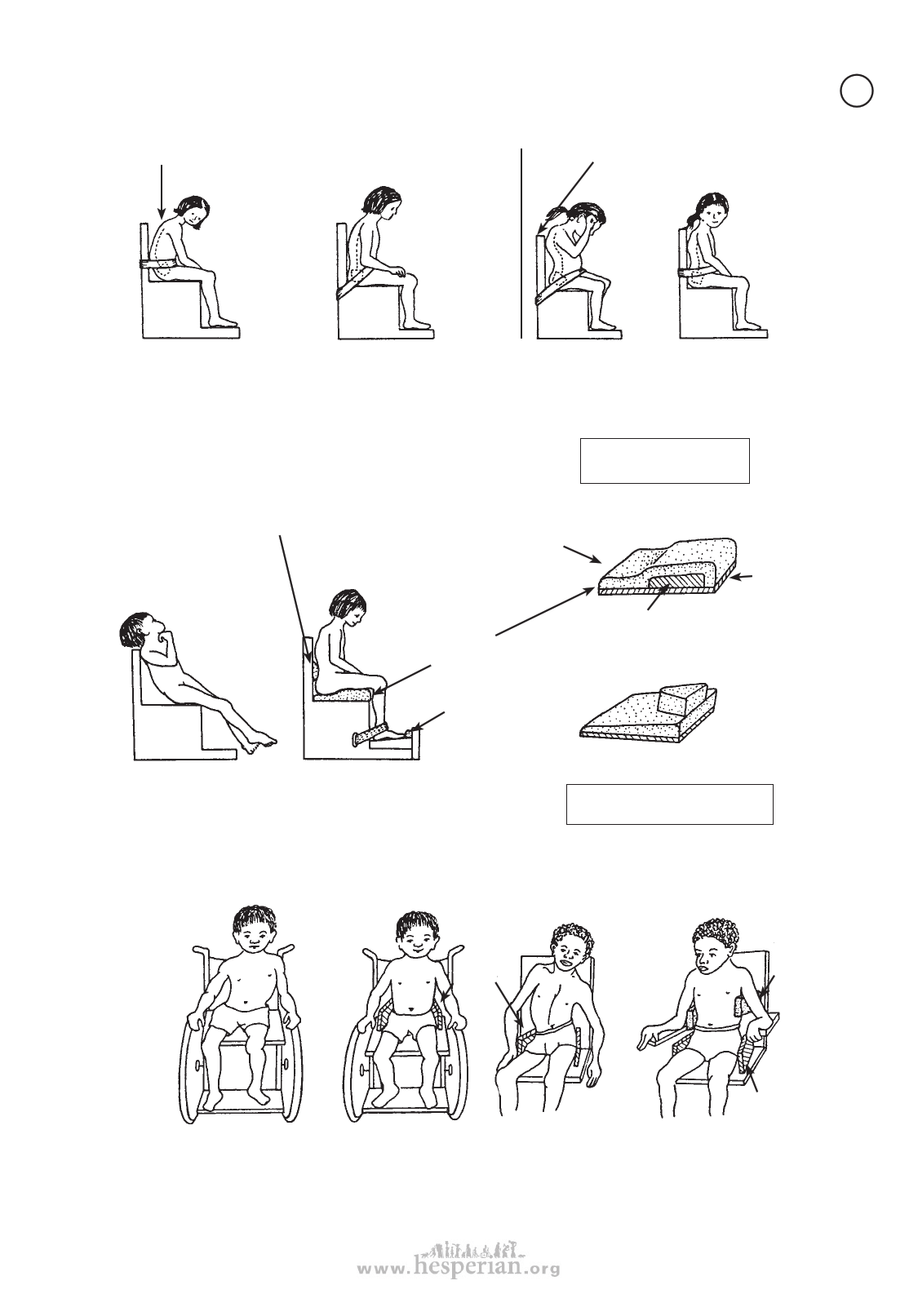
ADAPTING WHEELCHAIRS AND OTHER SITTING AIDS 609
Other ways to help keep hips at a right angle
HIP STRAPS
If the hips tilt back like this,
But if the hips tilt forward like this,
CP
a high
hip strap
will not
help much.
WRONG
A low
hip strap
helps keep
the hips
at a good
angle.
RIGHT
a low hip
strap
will not
help
much.
A high
hip strap
helps
keep the
hips at
a better
angle.
Notice that in both of these children with cerebral palsy, supporting the hips in a better position
helps the whole body take a more normal position.
SPECIAL CUSHIONS
For the child whose hips tilt back, or whose
upper body is ‘floppy’, a padded support
across the lower part of the back may help
her keep a good position.
Good cushions sometimes
make straps unnecessary.
sponge rubber
padding
WITHOUT CUSHIONS
child with
spastic
cerebral
palsy
WITH CUSHIONS
This cushion helps
keep the hips from
coming forward
Pad toe rest to
prevent cuts and
sores caused by
spastic push.
block to keep
hips from
slipping forward
thin wood
base
A padded post
may also help to
keep hips back
and legs apart
(see next page).
A footstrap or block that keeps knees bent
may help keep the child from straightening stiffly.
Note: Cushion designs for spinal
cord injury are on p. 200.
Keeping the body straight from side to side
hip
guides
padded
body
guide
Even with a firm board
seat, this boy’s body sags
to one side. This can lead
to increasing curve of the
spine (scoliosis).
Hip guides
may help
him sit
straighter.
Sometimes,
hip guides
alone are
not enough.
hip guide
He may also need
carefully placed
body guides, to help
keep his body in a
straighter position.
disabled village children